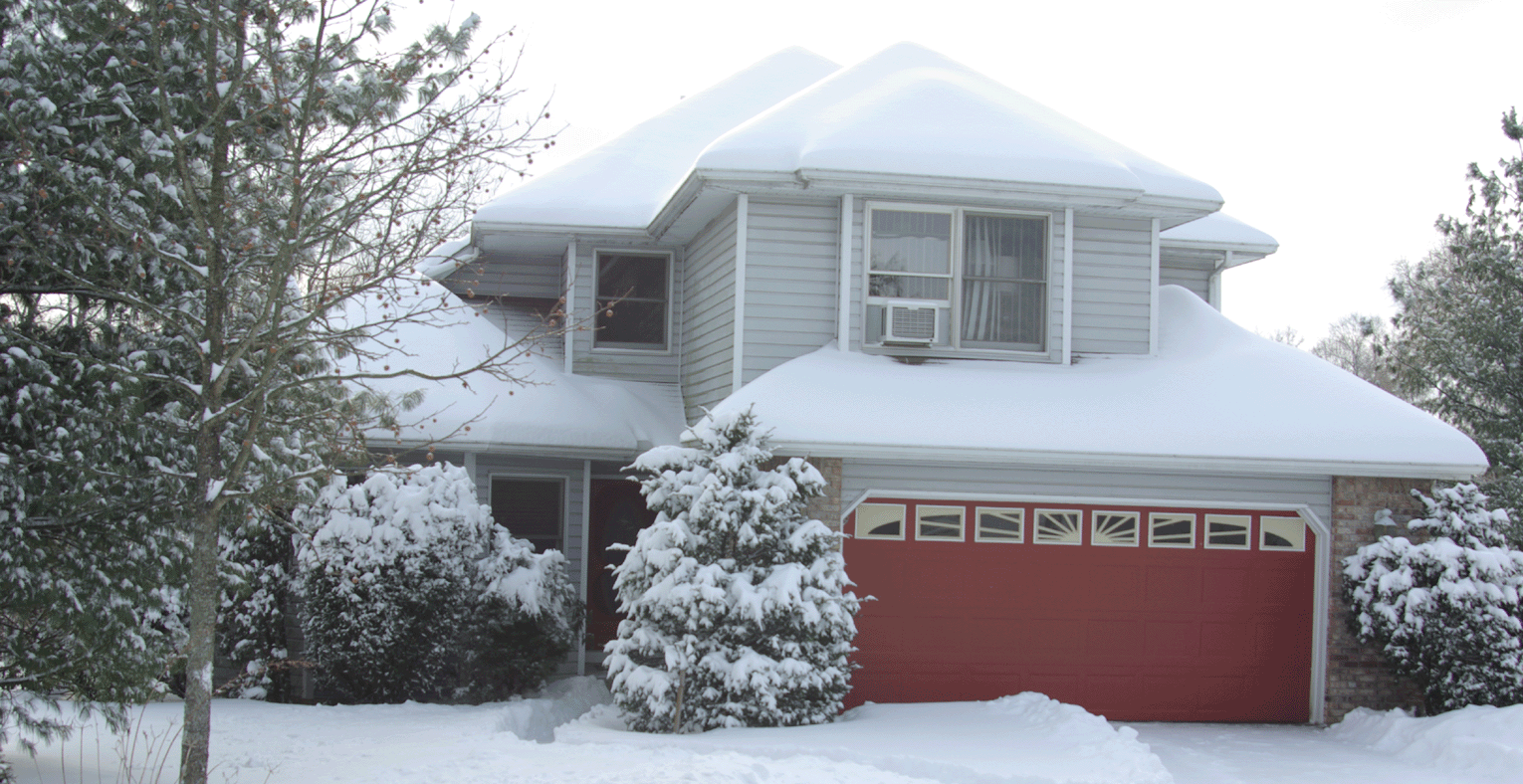
When Is It Too Cold To Build A House?
Years ago, before I’d thought of Architecture as a career, I worked summers as a construction laborer and framing carpenter. Some days, working outside was great fun for an 18-year old (read:summertime). I learned a lot about construction those two years, including the fact that construction doesn’t only happen on sunny, warm, summer days. And I wondered, when is it too cold to build a house?
Fortunately here in central Ohio, winter doesn’t really kick in hard until after the first of the year. That’s when we sometimes get long periods of below-freezing temperatures.
The harsh weather often makes it difficult to build – but when does it become impossible?
Foundation Work
Frozen ground doesn’t necessarily mean you can’t excavate; backhoes used for digging residential foundations can break through at least 12″ of frozen soil.
And since it takes about three weeks of consistently below-freezing temperatures to freeze the top 12″ solid, you can usually count on being able to dig until the end of January or into February.
If the ground is frozen more than 12″ deep, it’s often best to wait for warmer weather.
But as you get into the latter days of winter, the frozen ground begins to thaw – and you risk a significantly delayed project as the jobsite turns to mud (and stays that way until well into Spring).
Even if the excavation is complete, “stupid cold” can bring a project to a halt. Masonry work can’t proceed in below-freezing temperatures as the mortar won’t properly cure (and I recommend contractors not use anti-freeze in mortar).
Likewise, concrete can’t be poured on frozen ground.
The take-away here is timing – get the foundation in before the really cold weather hits, or wait until Spring.
Framing Work
Carpenters find working in very cold temperatures difficult too, and the quality of their work can understandably suffer. Roofers may not be able to work at all – besides the danger of working on a frosty roof, building paper and asphalt shingles can become uselessly brittle.
If carpenters and roofers can’t work, that means your partially-completed project will sit idle until the weather improves. That adds time to the project but it also exposes unfinished work to the elements – which can cause significant damage to unprotected building materials.
If the project you’re about to start is a room addition, or a remodeling that will open an outside wall, you’ll also need to be certain your existing home is protected from the cold.
A good contractor knows to “weather in” a room addition before the wall between new and old is opened up, and how to secure and properly insulate a necessary opening in an outside wall.
Interiors
Once a project is “weathered in”, work inside can usually continue at a normal pace (Even when it’s too cold to build a house on the outside). Contractors may use propane-fired heaters to keep the inside temperature reasonable until the heating system is installed.
Finishing drywall in a new home during winter months can be a bit tricky. The “taping and mudding” process introduces a great deal of moisture into the house. With the house sealed up tight against the cold, that moisture will take longer to dissipate – and that can delay final sanding, painting, and trim installation.
All new wood products have an ideal “moisture content” they should be at prior to installation. Too wet, and the new wood will shrink and twist after installation. Trim carpenters typically bring their material into the house several weeks ahead of time – to allow it to acclimate to the ambient moisture content of the house.
Every winter project schedule is subject to change as the weather affects building far more in the winter than other times of the year.
Be sure you account for this in your timeline, and be sure your contractor knows how to minimize the negative effects of this harshest of construction seasons.
And hopefully, your contractor employs hardier souls than me, who aren’t liable to suddenly decide that working indoors has career possibilities, too.



Love the photos with each step of the process. Goes to show that a little cold doesn't necessarily need to stop the homebuilding process. 🙂
– Jackie from Newton Home Insurance
Thanks Diane – so good to hear from you! Still in NYC?
Hi Richard: You raise interesting issues re: the quality of work (i.e., sheetrock, wood, plaster, roofing, etc) that is applied in cold weather. All of this could suffer in regarding to cracking, shrinking, etc. I guess if I was having a house being built in a cold-weather climate, I would want my builder/contractor to know that they need to take precautions with these materials so imperfections don't arise after the house is done. Thanks for another great post.
Quality control is can be a concern in very cold weather – you just want to get done and get warm!
Building should always be done when you are free to move and not disturbed by colds or the freezing wind. Great post!
The winter is very severe, I prefer the summer, I think not suit me in this climate so cold!